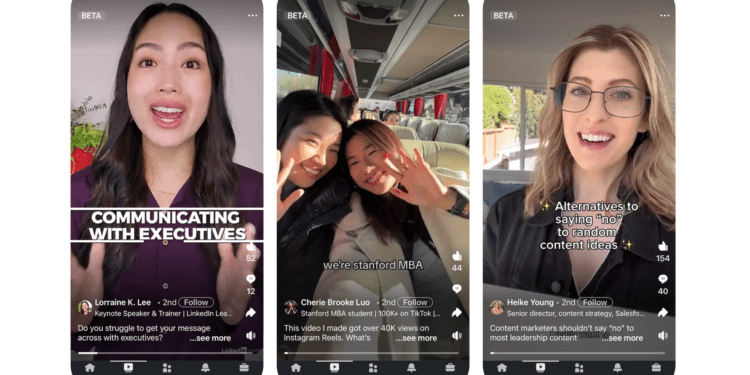Compared to other social networking sites, LinkedIn presents a more polished and meticulously curated environment. While most social media platforms are primarily used for entertainment or reconnecting with friends, LinkedIn has steadfastly maintained its focus on professional networking. It serves as an excellent venue for celebrating career achievements or connecting with industry peers, yet interactions on the platform can sometimes feel disingenuous.
On LinkedIn, your objective is to enhance your professional image. Consequently, users frequently refrain from trying out various content formats.
Last year, I collaborated with an executive who occasionally produces video content in partnership with a communications agency. His typical strategy involved sharing lengthy videos that delve into complex industry themes. I proposed that he explore short-form vertical video content, advocating that current consumer preferences lean toward authentic, user-generated material over highly polished advertisements. He declined—but LinkedIn has now matched other social media platforms by introducing a vertical feed.
A scrolling video feed could drastically transform how we showcase ourselves on LinkedIn and might inject some lightheartedness into a platform often perceived as serious.
Vertical video: A trendsetter in digital media
LinkedIn has existed slightly longer than Facebook, yet it is one of the final major social media platforms to embrace the standard vertical video format. When you think of vertical video, TikTok may come to mind first, but Snapchat led the way in redefining vertical viewing experiences back in 2011. TikTok further popularized this format after its launch in 2016, with Facebook following suit by introducing stories in 2017.
The majority of our online content consumption now takes place on mobile devices. A survey from the Pew Research Center noted that smartphone usage jumped from 35% in 2011 to 90% by early 2024. Furthermore, 15% of adults in the U.S. exclusively use smartphones to access the internet without a traditional computer.
Social media platforms primarily generate revenue through advertisements. As a result, these platforms are crafted to maximize user engagement and keep us on the apps for extended periods. Continuous video feeds contribute to the addictive nature of social media, and the vertical presentation heightens the immersive experience that encourages endless scrolling.
The creators who are already here
How will vertical videos influence our behavior on LinkedIn?
A quick glance at my own LinkedIn video feed revealed comedic clips, a “salary hack” strategy, and a fun video featuring “Get Low” by Lil Jon & The East Side Boyz. Creators have already started to leverage the platform for satirical takes on workplace culture.
Eliza VanCort, an author, speaker, and consultant who frequently shares videos on TikTok, Instagram, and Facebook, believes that LinkedIn is on the brink of a cultural transformation, particularly as vertical videos provide a fresh alternative to the long-form articles commonly associated with the platform.
“There’s no doubt that the culture will evolve—and for many, this shift will be welcomed,” VanCort states. “As you start sharing this type of video content, a more relaxed atmosphere will emerge…. [We’re] stepping into the 24-hour news cycle on LinkedIn.”
Jonathan Greye, a partner and chief branding officer at PersonalBrand.com, posits that although building a personal brand on LinkedIn remains crucial, the new content format encourages users to rethink what that branding entails.
“First, you need to unbrand yourself before you can market yourself,” Greye explains. “We’re overwhelmed with information, and it’s easy to lose our way. During the unearthing process, it’s critical to strip down to your core identity and then develop a brand around that.”
A new path to visibility
New thought leaders may find enhanced visibility in a crowded marketplace by embracing the new video feed early. The key component of this transition will be discerning what types of content to share.
VanCort advises creating list-driven content. “[This approach] is particularly effective on LinkedIn,” she notes. “While audiences may tolerate narratives on Instagram and TikTok, LinkedIn users prefer tips like ‘Five ways to improve this [or] to benefit your business.’”
In summary, if you’re promoting your business on LinkedIn, it’s wise to adapt to the new content format—and perhaps relax your approach slightly.


